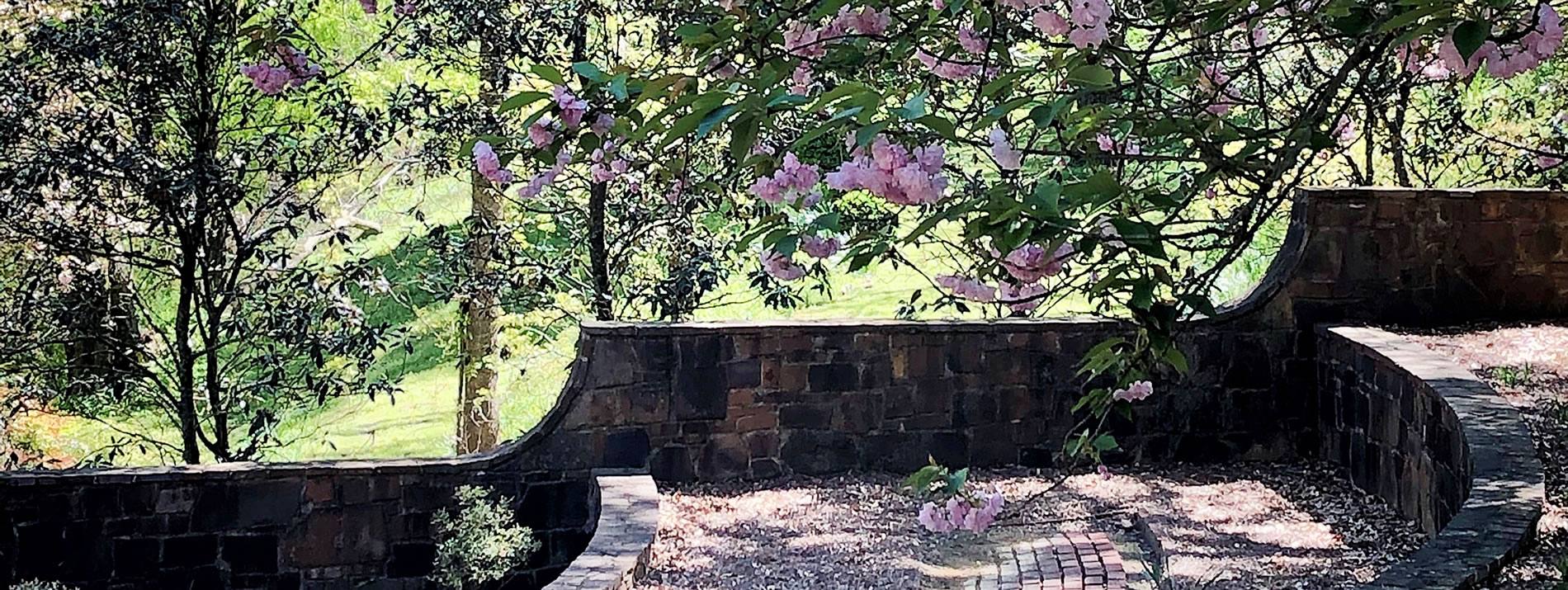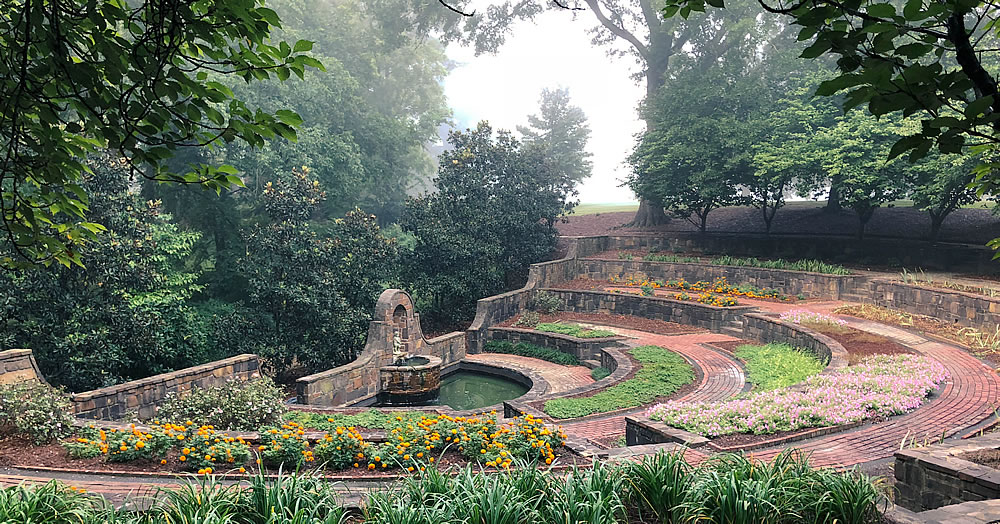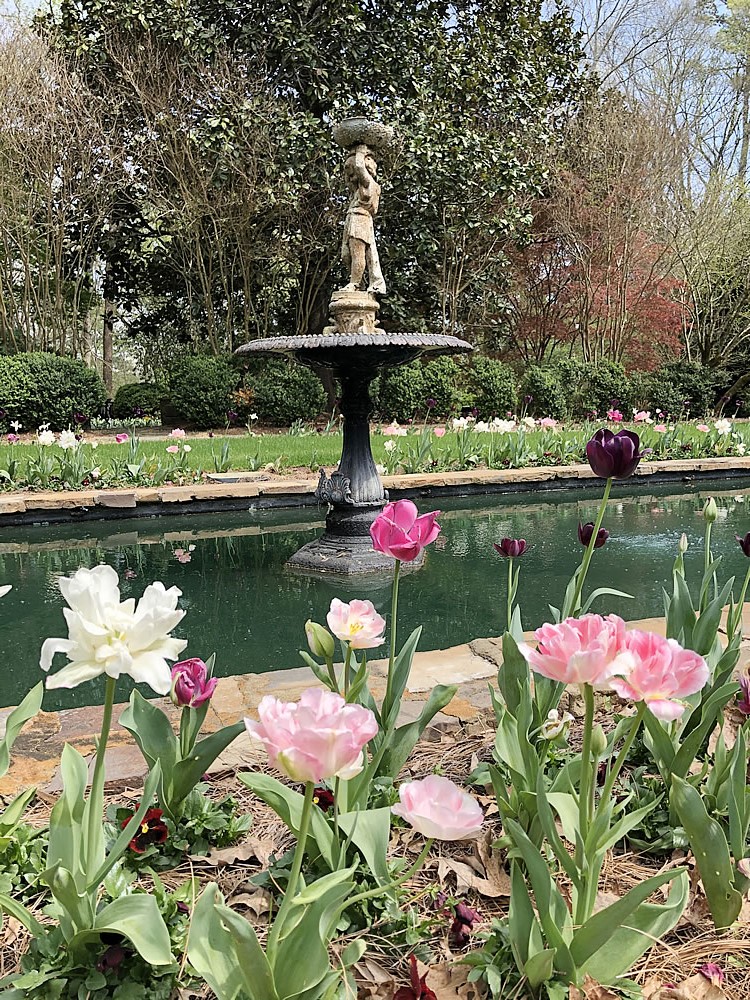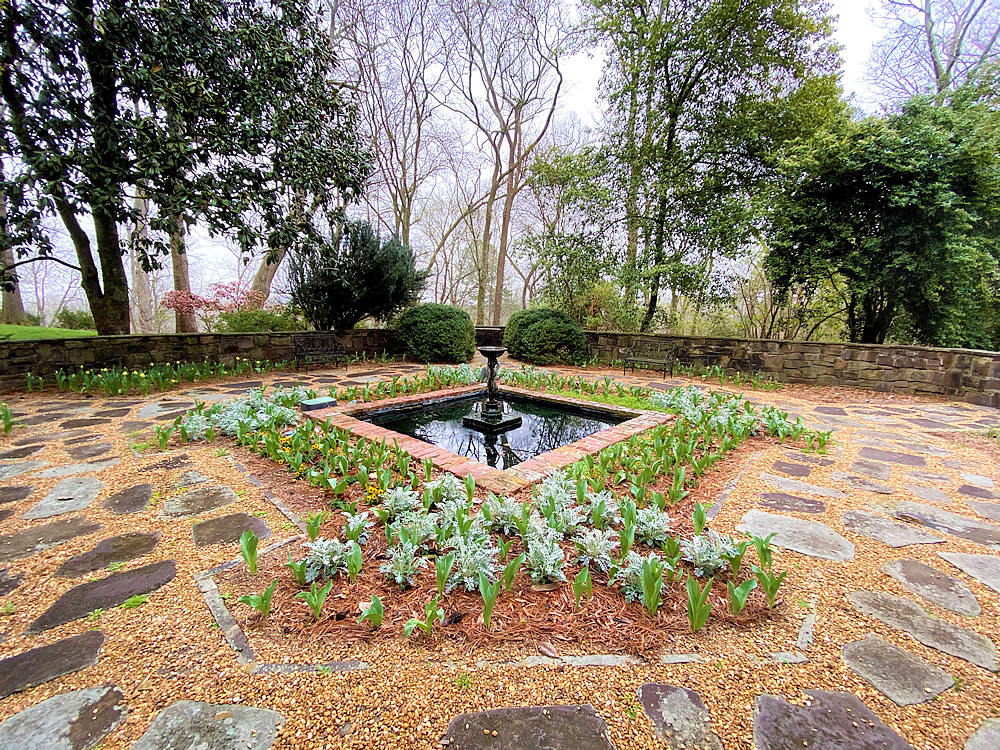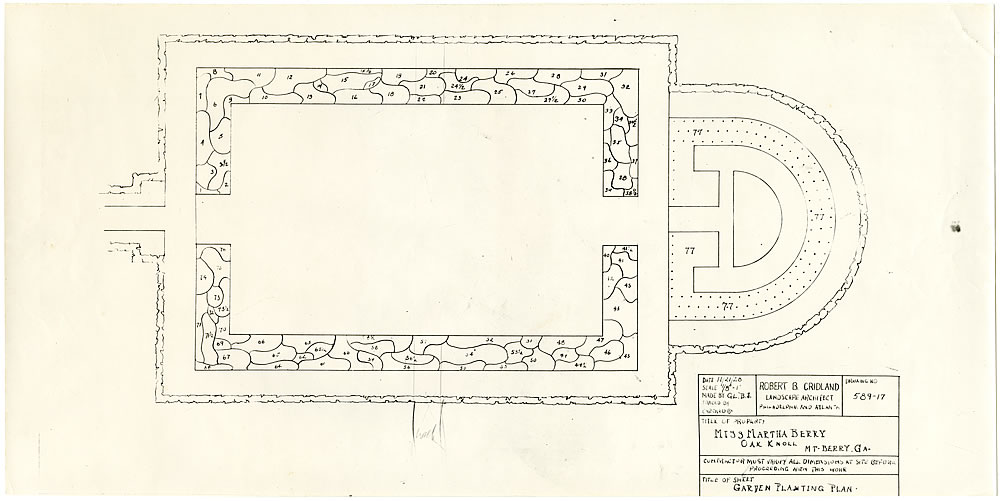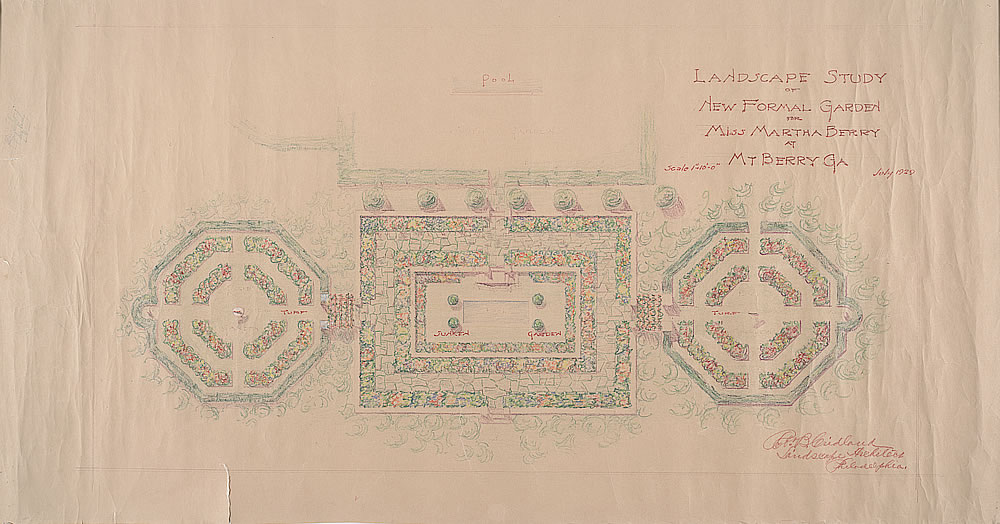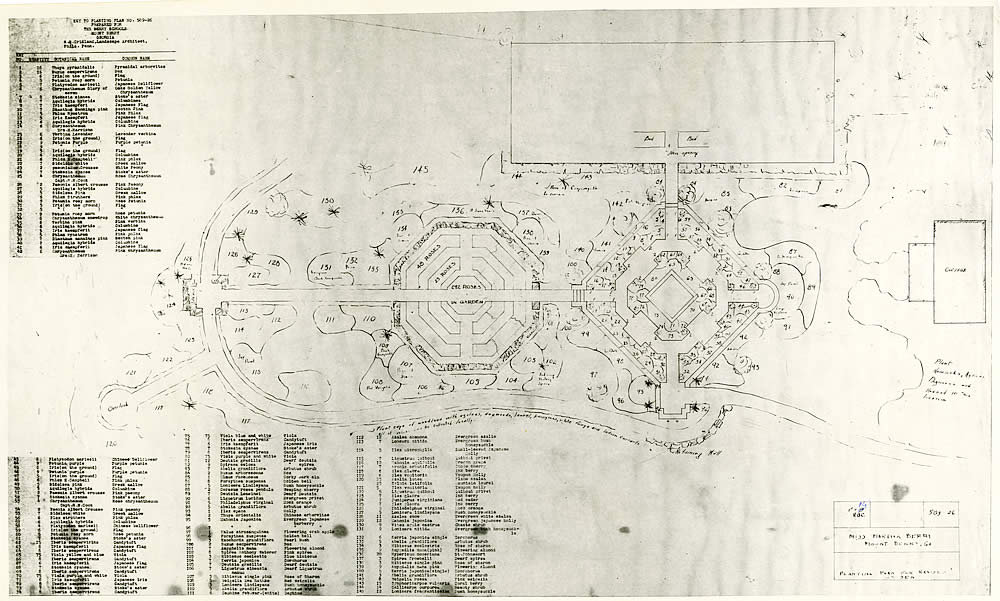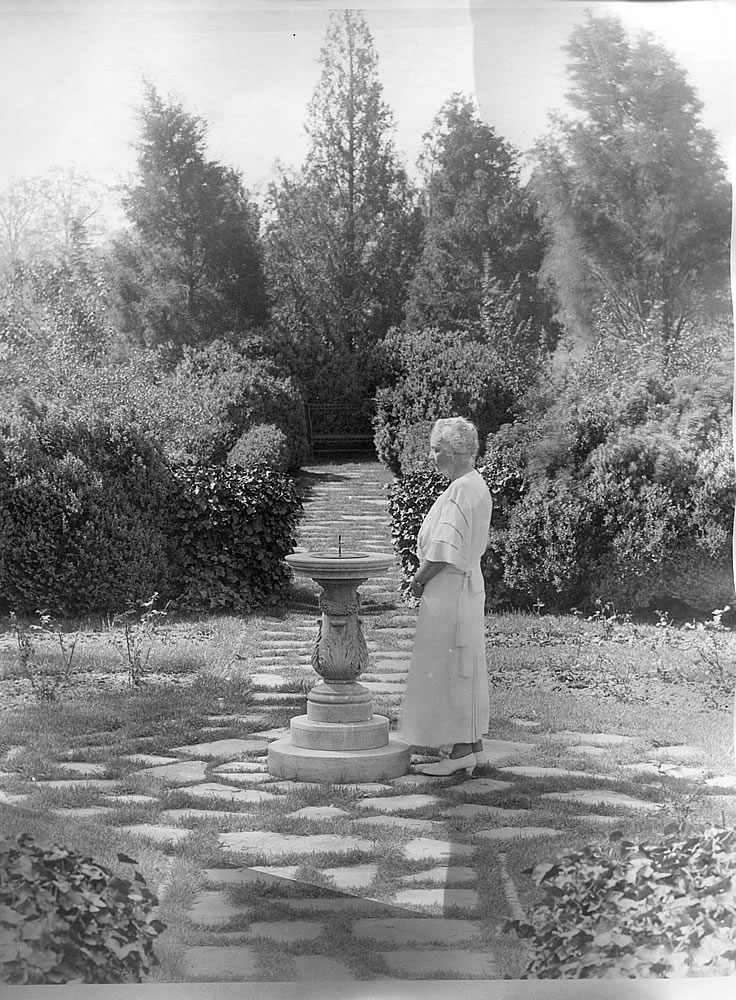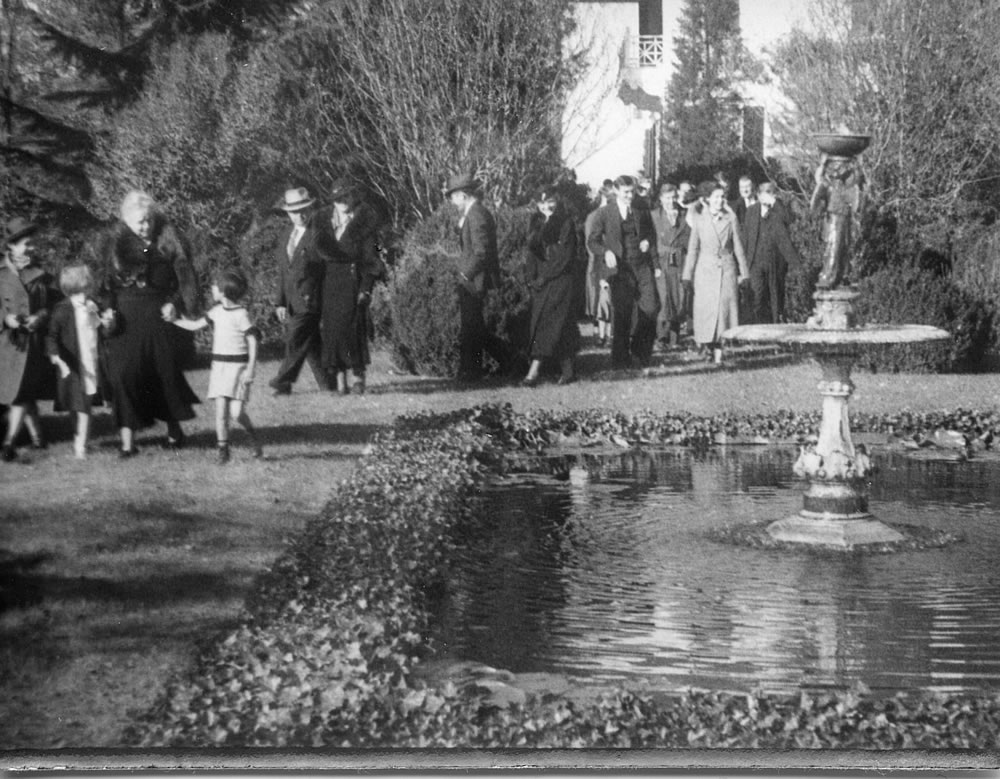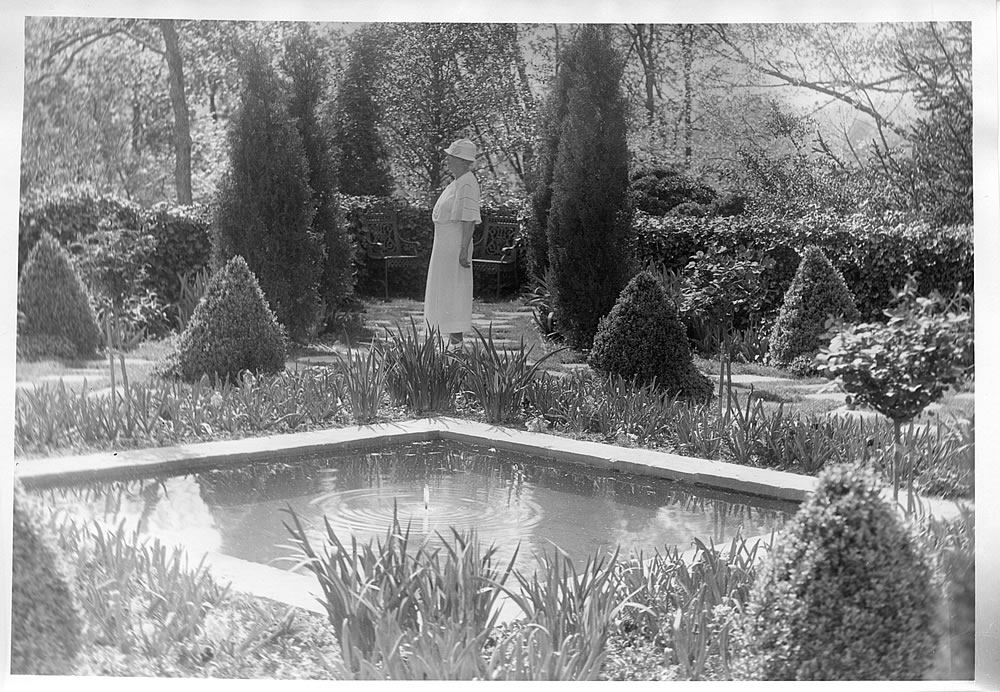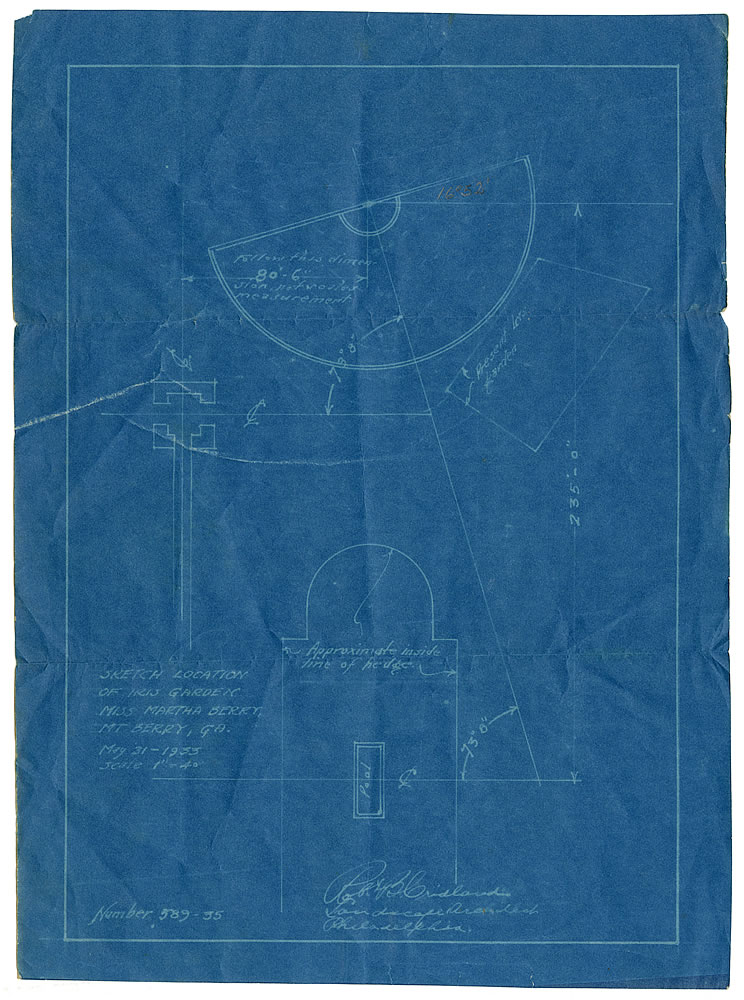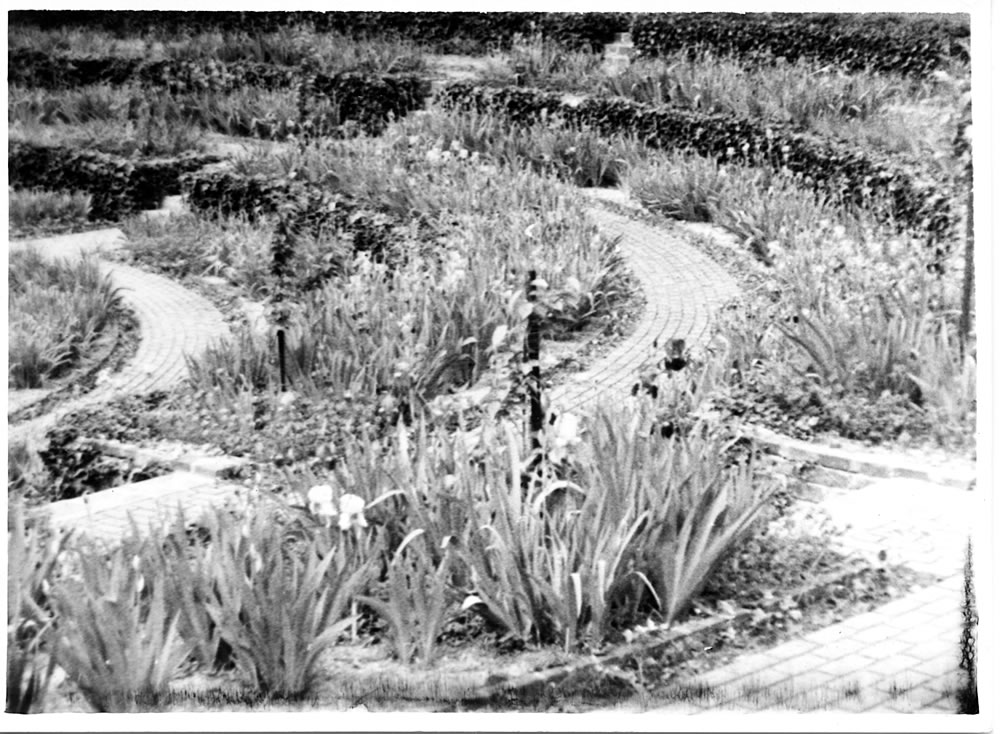Left Nav
"I pray that I may leave the world more beautiful than when I found it."
-Martha Berry
Designed and constructed between 1927 and 1934, the gardens at Oak Hill exemplify Colonial revival garden landscapes of the 20th-century.
After deeding Oak Hill to the Berry Schools in 1927, Martha Berry began renovating the estate to modern and personal tastes with the home receiving extensive attention. However, she was a lover of nature and wanted to enhance the grounds of the estate as well. To complete her vision of making over her childhood home, Berry brought in Philadelphia landscape architect Robert Cridland to plan the gardens surrounding the house.
Robert B. Cridland began his career as a traditional architect, but he transitioned into working in landscaping around the turn of the 20th-century. Some of Cridland's other landscape architecture projects include the rose garden at the Hyde Park mansion of Frederick and Louise Vanderbilt and the gardens of Cator Woolford in Atlanta, GA. With each plan, he learned and developed many theories, concepts, and opinions regarding landscapes, gardens, and pathways for homes, which he described and illustrated in his book "Practical Landscape Gardening" in 1916.
Cridland's book contains detailed drawings spanning topics like the appropriate curvatures of driveways, garden bed shapes, ornamental plant placements, and the grading of lawns. The book acts as a guide for interpreting the choices made for the grounds at Oak Hill.
Beginning in the late 1920s, Cridland created four separate gardens: a formal garden, a sundial garden, a flowered path, and a goldfish garden. While Cridland had a strong point-of-view for what landscaping was best suited for the Oak Hill estate, Martha Berry's wishes shaped the garden plans as much as his particular taste. The result was practically planned gardens to beautify Oak Hill in such a way that preserved the historical significance of the grounds.
The landscape designs at Oak Hill represent early 20th-century landscaping trends that accompanied the revival of Colonial architecture. Compartmentalized gardens, which are separated by shrubs or walls, while a Victorian style, carried over into the following century, and feature prominently in Oak Hill's gardens. Other decorative choices, such as the use of classical statuary and fountains, along with ponds and sundials situated within a panel of greenery, were popular designs for elaborate gardens and informed Cridland’s plans. To balance the precision of the formal spaces, wild gardens composed of "carefully planned tree groups with wildflowers, groundcover, and bulbs underneath" surrounded the boxed-in, walled gardens of Colonial revival style gardens and the Oak Hill estate.
From various renderings and letters, it is clear that the final layout of the gardens came after several modifications to the earliest drawings. For instance, Aunt Martha's Cottage, which had previously been the Berry children's schoolhouse, was a subject of debate, as one landscaping plan had a rose garden placed where the cottage still stands. In a letter to Cridland, Martha Berry explained, "[Aunt Martha's Cottage] adds to the history and tradition of the place," and therefore, the plans would have to change.
One of Oak Hill's most famous gardens, the Sunken Garden, was a late addition. After visiting Europe in the summer of 1930, Martha Berry became dismayed that the Oak Hill gardens lacked the drama of those she encountered abroad. She shared her feelings in a letter to Cridland, but thankfully, Berry had seen an amphitheater-style garden while traveling in the Poconos that she felt would fit right in at her home. In 1934, utilizing a natural cliff on the edge of the existing gardens, Cridland transposed the terraced garden design Berry enjoyed in Pennsylvania to the landscape of Oak Hill in the form of a sunken garden planted with irises.
In the decades to follow, caretakers added and removed trees, converted grass pathways to pebble, and adjusted planting plans to account for changing lighting and weather trends. In the late 1970s, Blalock and Associates, an Athens Landscape firm, redid several of the plantings and flowerbeds in the gardens. Today, the Oak Hill staff maintain the gardens with assistance from Berry College students. Martha Berry and Cridland’s combined wishes still inform the treatment of the grounds, and visitors to the Oak Hill Gardens will continue to experience the beauty of a practically planned landscape.
To read more letters concerning the Oak Hill Gardens, follow this link to the Oak Hill Estate and Gardens page on the Martha Berry Digital Archive Website.
